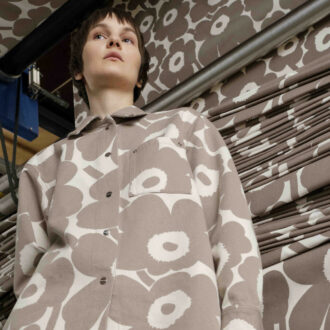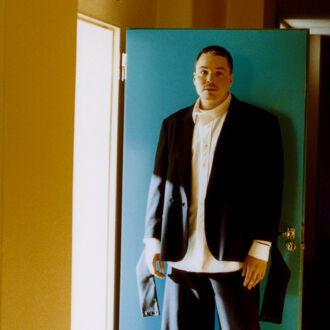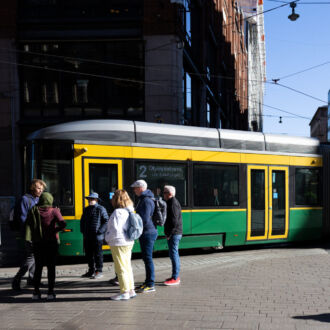I fell in love with Finnish design a long time ago.
When I moved recently from Toronto to Helsinki, I wanted to simplify my life. I gave away most of the contents of my house and arrived with just a few cherished possessions, including a vintage Artek Stool 60.
That piece became the starting point around which I designed my ideal apartment.
I added a few more stools, an Aalto Daybed, a vintage Chair 611 with pink webbing, some Kori pendant lamps and a Harri Koskinen Lento table – all Artek products. As I posted my finds on social media, a friend saw the stools and joked that soon I could open a kindergarten.
Those Artek pieces, along with some flea market treasures and a few items from Finnish design shops, now furnish my flat.
A new kind of living
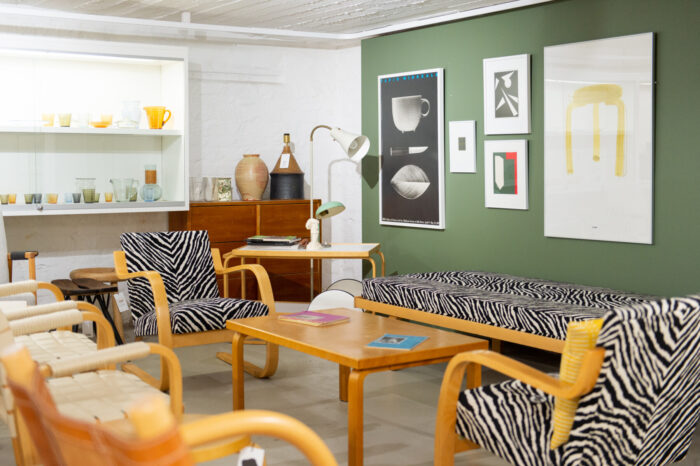
Artek came onto the scene in the 1920s as a bold new proposition, blending idealism with innovation in its furniture.Photo: Emilia Kangasluoma
Artek was founded in 1935 by modernist design pioneers Aino and Alvar Aalto, art patron Maire Gullichsen and art historian Nils-Gustav Hahl. It set out to promote a new kind of living – one that merged art and technology into functional, elegant design.
The name Artek itself reflects the fusion of art and tech, concepts that were integral to the modernist movement in the 1920s. The company was a bold new proposition, blending idealism with innovation.
Multiple celebrations
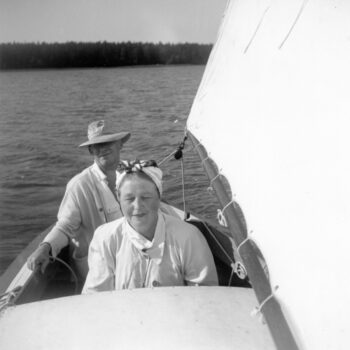
Modernist design pioneers Aino Aalto and her husband Alvar were two of the cofounders of Artek in 1935.Photo: Alvar Aalto Museum
On the occasion of the company’s 90th anniversary in 2025, Artek’s flagship store in central Helsinki released a special anniversary collection, including an Artek + Moomin line featuring the Moomin characters created by Finnish artist and author Tove Jansson. (The first Moomin book was published in 1945, so it turns 80 the same year Artek turns 90.)
The Artek + Moomin line consists of classic Aalto furniture engraved with Jansson’s early drawings and handwritten texts. One stool reads, “Oh! How brave you are!” while another exclaims, “Well strike me pink!”
The showroom display recreated Jansson’s studio, complete with seashells, an easel and seaside-themed curtains. It included a guestbook from Villa Mairea, the iconic residence the Aaltos designed for the Gullichsens, opened to a 1940s entry by Jansson, who left a note and a watercolour of the house.
Preloved Finnish design
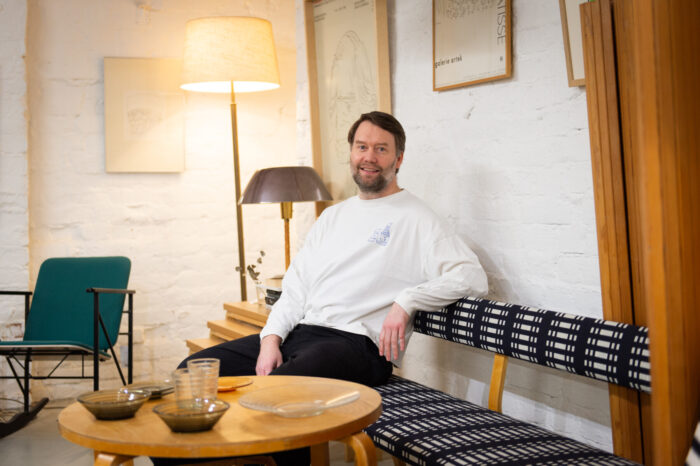
Artek 2nd Cycle recirculates Artek furniture and is more than just a shop, says its manager, Antti Tevajärvi.Photo: Emilia Kangasluoma
Artek’s influence extends far beyond commemorative collections. Its commitment to sustainability and design longevity is embodied by Artek 2nd Cycle, a platform launched in 2006 to recirculate well-worn yet still-functional Artek furniture. Its manager, Antti Tevajärvi, sees it as more than a shop. “Artek 2nd Cycle is a continuous research platform into the past 90 years of Artek’s strong design heritage,” he says. “We’re always celebrating Artek, even when it’s not an anniversary year.”
Originally created to showcase the patina and longevity of Aalto stools, 2nd Cycle opened its own store in 2010 in Helsinki’s Design District. For lovers of Finnish design, a visit can feel a bit like a pilgrimage. The vast subterranean shop houses an eclectic mix of Artek originals – some lovingly worn, others rare.
Still in production
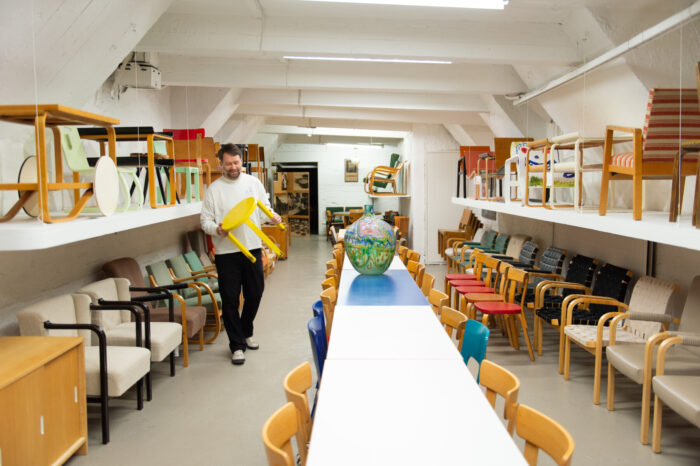
The vast subterranean space of Artek 2nd Cycle houses an eclectic mix of Artek originals.Photo: Emilia Kangasluoma
In addition to staples like the Stool 60, visitors might encounter Maire Gullichsen’s elegant glass lamp, Maija Heikinheimo’s brass and copper coffee pot or Yrjö Kukkapuro’s sculptural Karuselli lounge chair. The store’s ever-changing inventory tells the story of Finnish homes and tastes across generations. Artek “has a very special pocket in the history of the international modernist movement,” says Tevajärvi.
Almost 100 years after Artek started, many of the items created by the original founders and the designers who came after them are still in production. The company remains relevant – not just in curated museum displays or chic interiors, but also in the everyday lives of those who make use of its designs.
“Perhaps it’s the organic modern form, the use of natural materials, the innovative engineering with a human touch or a combination of these things which continues to fascinate our followers,” Tevajärvi says.
By Karen MacKenna, July 2025
The Alvar Aalto Museum’s Aalto2 Centre features Artek designers in Visibly Invisible: Artek’s Drawing Office 1936–2004 until September 14, 2025.


